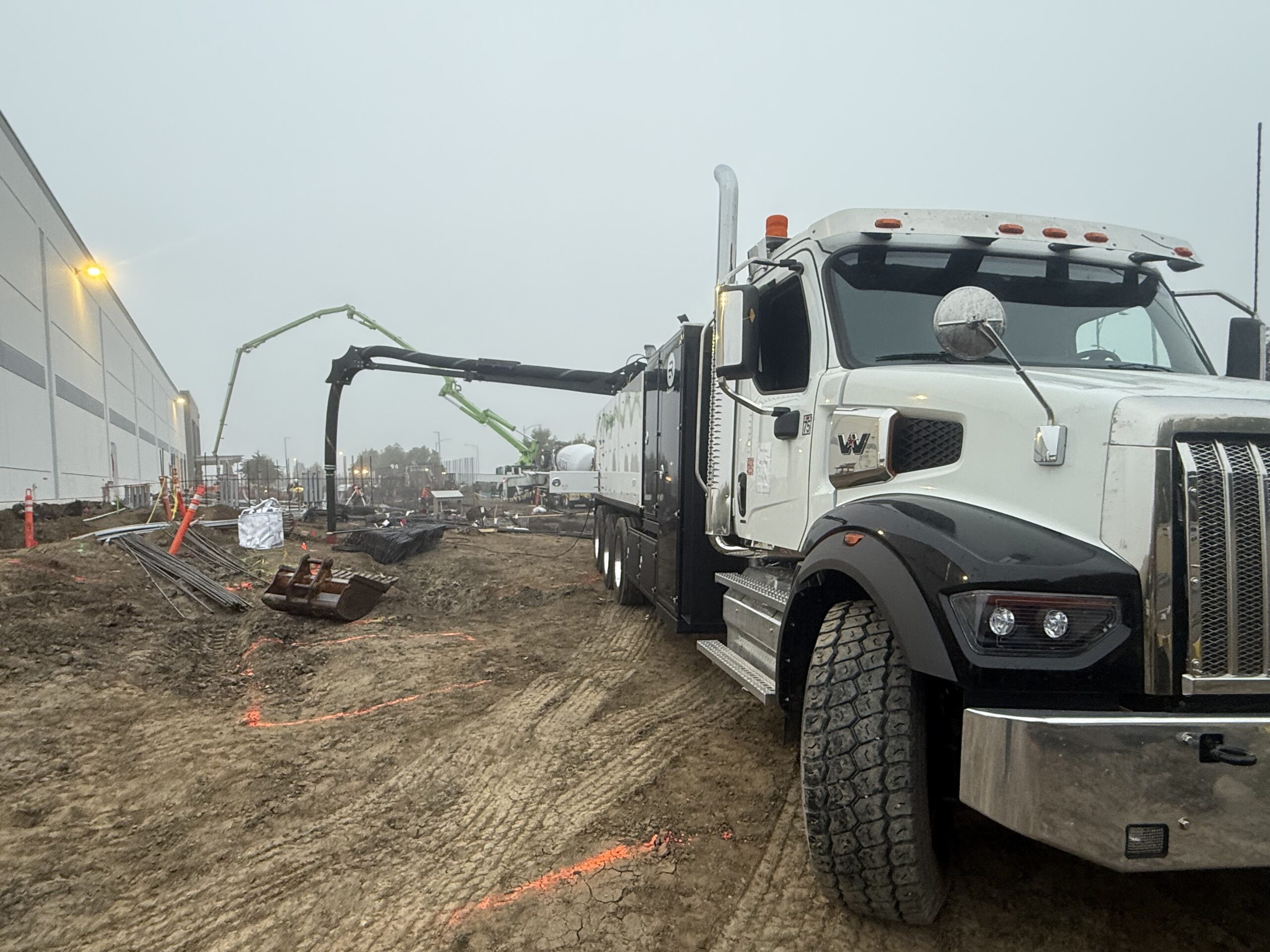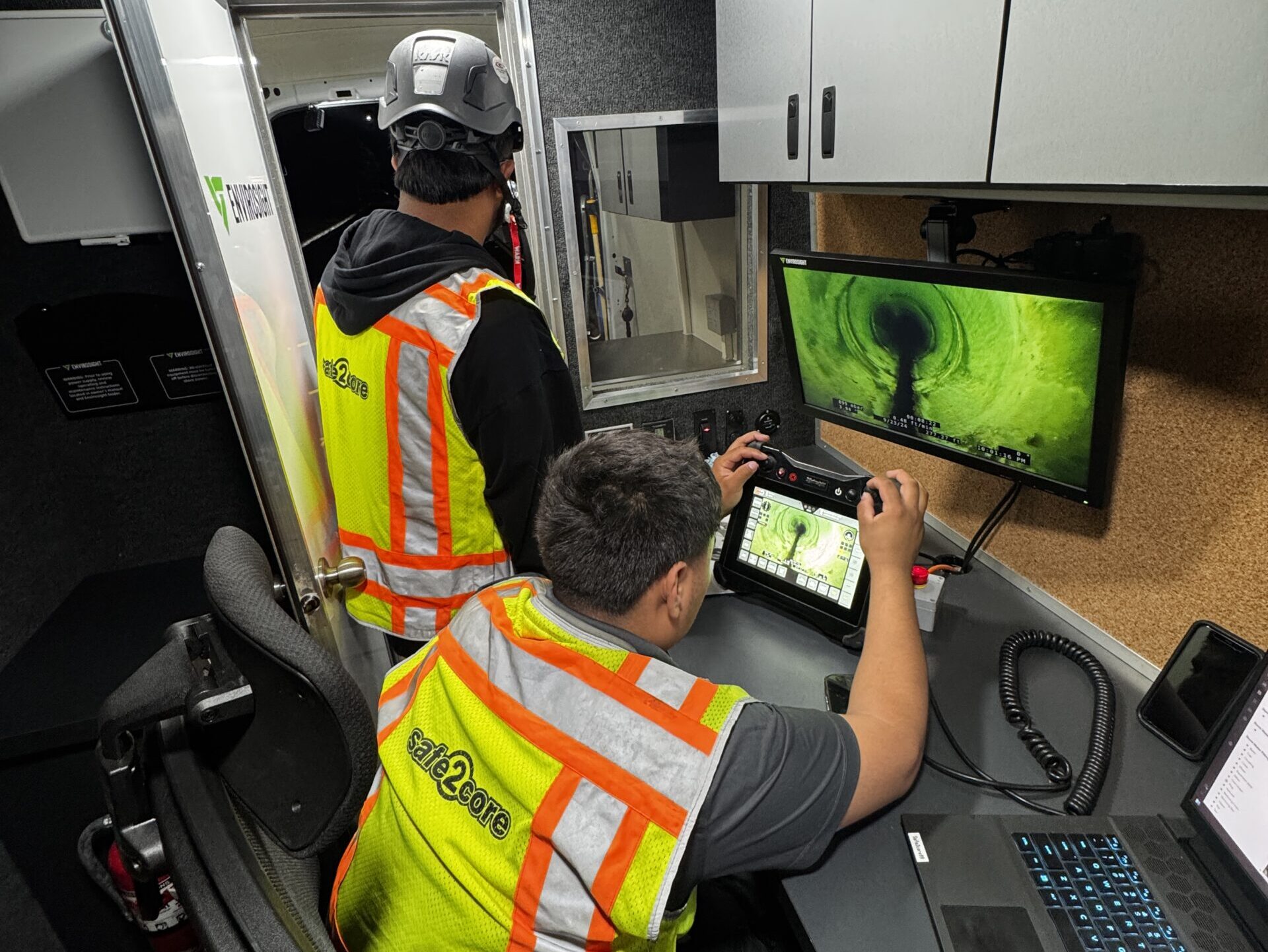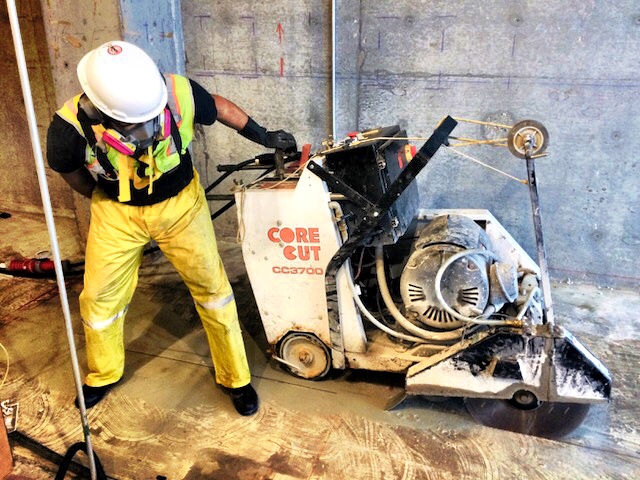🔍 Quick Answer: What is Concrete Coring?
Concrete coring is a precise method of drilling clean, round holes in hardened concrete using specialized diamond core drills. It’s commonly used to install utility lines, HVAC systems, or create structural access—without damaging surrounding material.
At Safe2Core Inc., we know a thing or two about concrete coring. Over the years, we’ve been on many a job, from small show-and-go projects to huge industrial project campuses. We take a lot of pride in our experience and the service we provide to meet the needs of every client we have. But we also have a sense of humor about our work and the occasional odd or downright ludicrous things people believe about what we do. In this spirit, we’re going to take a lighthearted look at everything you never wanted to know about concrete core drilling—and then answer some serious questions about how and why it works, and why not all concrete coring companies are created equal!
1. Concrete Core Drill Rig Is More Advanced Than It Appears
Many people think a concrete core drill is a simple machine. In many ways, it is. It’s a base, a telescoping armature, and whichever drill bit you’re using to get into the material you’re coring. Sounds easy enough, right?
Well—not so fast. You still have to think about how you’re going to run the rig. On most projects, there’s no access to electrical power yet when we arrive. This means either a gas slab drill which requires an integrated fuel tank and an additional fuel supply or an electric slab rig run off a gas generator which means you need a whole other machine to run the machine that’s going to do the work! They are also mostly cooled by water, so you’re going to need a water bucket so the machine can suck up enough water not to bind up while you’re making the cut. Most mobile rigs for coring concrete and asphalt are electric, which means hauling the rig and generator from truck to core site to core site to core site to truck again.
But how hard can THAT be?
2. Coring Rigs Are Built Heavy—And For Good Reason
Because of the work they’re designed for, coring rigs have to be sturdily built—and that means extra weight. Even if you attach the largest drill bit at the precise point you’re going to core, you’re still maneuvering around 150lbs of steel around. Sure, most core rigs have wheels, which work about as well as your average wheeled suitcase and have all the turning capability of the average brick. Plus, on the average job site there are cables, conduits, hoses, pipes and obstructions all over the place, never mind all the people and equipment moving around. Now you’re navigating this heavy piece of equipment across uneven ground, thinking at least five steps ahead. Then you have to get the rest of the equipment. Remember you needed that water bucket? Five gallons of water weighs about 50lbs on its own. That generator is at least 50lbs. The drill bit could top 30lbs, and remember the rig is around 150lbs on its own. You also need the wrench to attach and lock the bit into place, so add another 5lbs or so. You’re already coming up on 300lbs of equipment to cart around before you ever touch bit to concrete. Plus you need another container for the cores you collect, which could weigh anywhere from a few ounces to upwards of 20lbs—and all that has to be hauled BACK when you’re done!
3. Concrete Cutting Is Loud—Sometimes Dangerously So
This shouldn’t come as any surprise, but it’s amazing how many times someone will try to have a conversation over the sound of concrete or asphalt coring. Just running the rig and generator makes about as much noise as a lawnmower at 85dB. When you’re cutting cores, between the generator noise, the basic sound from the rig motor and the core drill itself, the noise level jumps up sharply, to somewhere around 120dB. That’s about as loud as standing right in front of the stage at a Metallica concert. For this reason, hearing protection is a must when you’re working in close quarters with one of these machines—and chatting it up while you’re drilling isn’t really a thing.
4. Core Rigs Can Be Temperamental—Technique Matters
Coring is definitely one area where the maxim “Slow is smooth and smooth is fast” applies! Just like any other skill, a properly qualified operator can make running a core rig look safe, smooth and simple. And in theory, it is. But it only takes one mistake to bind a coring bit in the material, warp the bit or make an off-center cut that gets the core jammed inside the bit. The rig has to be held perfectly straight and level and the cut has to be made slowly and smoothly to prevent binding and bit warping. Anyone who’s worked for a concrete coring company for more than ten minutes has probably had all of these things happen to them, and it can shut down work in a big hurry! Getting a jammed core out of a bit requires massaging the core up and down within the bit while tapping the side of the bit with a rubber mallet to help ease it out. Asphalt can be even trickier, because the bituminous binding agent melts with the heat of drilling the core and then cools, basically gluing itself to the interior of the bit. It’s not a lot of fun to have to deal with, and an experienced technician like the ones Safe2Core Inc. employs will be deeply committed to never having to go through THAT again!
5. If You Cut It, You Have to Fill It—No Exceptions
You can’t just be leaving holes in floors, driveways or roadways. (Of course, you CAN, but you’re probably going to bring down the wrath of the engineer, contractor and project owner on your head, not to mention the general public who has to deal with the pothole later.) This means you have to patch the holes you’ve made, unless you’re doing a wall core cut to allow for a large conduit to pass through, which is a whole different beast. For patching, most projects will require something like Quikrete or cold-patch asphalt, depending on the material you’re working with. To patch the holes in concrete, you have to have a way to mix up the concrete, fill the hole and finish it off smooth and level so it doesn’t leave a joint around the core location, sink in on itself or cause a trip hazard by bulging. For asphalt patching, you have to scoop out the cold patch, fill the hole about halfway in a single lift and compact that into a firm surface before you repeat the process at the top. You can’t leave divots, joints or depressions, because this can cause a trip hazard in foot traffic areas, interfere with drainage and allow water and frost to infiltrate the material outdoors, leading to damage five or ten years down the road, if you’ll pardon the pun.
As you can see, concrete coring is a lot more complex and labor-intensive than it looks.
That’s why when you need coring or saw cut operations done right the first time, you need Safe2Core Inc.!
From San Bernadino to southern California to Denver and beyond, Safe2Core Inc. is the preferred source for concrete and asphalt cutting solutions including:
- Concrete grinding and grooving
- Concrete removal
- Concrete sawing
- Concrete scanning
- Flat sawing
- GPR detection of plumbing, electrical, gas and water lines
- Safety grooving
- Slab sawing
- Wall sawing
- Wire sawing
- And more!
For a quote request, click here to contact your locally owned and operated Safe2Core Inc. office. Be sure to mention the location of project and your specific needs so we can serve you more efficiently! Don’t forget to check out our testimonials and FAQ about concrete core drilling below either, to learn more about concrete core drilling from Safe2Core Inc.!
Frequently Asked Questions About Concrete Core Drilling
Safe2Core Inc. is your source for GPR and concrete cutting and drilling operations, and we’re here to help with straight, honest answers about your concrete cutting needs!
Question: Why are concrete core drilling rigs water-cooled? Wouldn’t air-cooled rigs be lighter and more efficient? –Mark, Fritch, TX
Answer: In theory, yes, an air-cooled concrete coring rig would be lighter, although whether it’s more efficient is a matter of intense debate. The fact is, water-cooled core drills also use the water as a lubricant to help keep dust down and prevent binding and warping of the core or the drill bit during operation. Silica dust is a constant long-term threat to the health of people who work around concrete a lot, which is why respirator masks were popular and even mandatory on construction sites long before COVID-19 came along. Air-cooled drills work fine for smaller jobs, but for an 8” full-depth core, in our experience it takes longer to use an air-cooled rig and the resulting core isn’t as well-formed, meaning it might not be usable for laboratory testing. Water-cooled rigs simply give better results, faster, which is why they’re the most popular option out there right now. However, scientists are always working on new ways to make coring operations quieter and safer using new materials, technologies and cooling methods, so twenty years from now, we could be looking at a whole new generation of concrete core cutting devices!
Question: What happens to the core plug after you core out concrete or asphalt? –Shelby, Denver, CO
Answer: The reason the core was pulled in the first place determines what will happen to it. Most often, cores are taken for forensic analysis or destructive testing at a laboratory, either to ensure compliance with project parameters and protocols or to evaluate why a failure happened and what needs to be done to fix it. Sometimes, coring is used to cut a conduit run, and these cores are usually discarded unless the project engineer or other responsible party directs otherwise. We’ve seen unneeded cores recycled, used as doorstops and boat ballast and even had a few taken as souvenirs or used as commemorative plaques for project managers or civil engineers who were getting ready to retire or move on.
Question: How many cores do you usually have to take at a time? –George, San Francisco, CA
Answer: It depends on what we’re doing, the size of the cores and the reason they’re needed. If we’re cutting a series of conduit runs, we may have to core out upwards of a hundred different locations. If we’re taking cores for forensic lab testing, we may need to pull 20 cores or more. If we need smaller cores representing a larger area, we’ll probably take more of them in conjunction with the directions given by the engineer of record, the project manager or the requirements of the local jurisdiction in which we’re working. There’s really no set answer to this question, because every project is a little different, but generally the smaller the bit, the more cores we’ll need and vice versa. For more information on this and how and why it’s needed, you’ll need to check with your project engineer or manager.
Question: Is concrete core drilling safe? –Corey, Artesia, NM
Answer: If it’s done correctly, by properly trained and qualified personnel, concrete core drilling is no more dangerous than any other activity on a construction site. The biggest short-term threat is improper lifting or moving techniques for getting the core rig from location to location, while silica dust generated by cutting, drilling or sawing concrete is the most serious long-term health issue. If these are managed properly and the area to be cored has been scanned and marked previously to ensure no structural steel or conduits are impacted by the coring operation, concrete coring is a safe, fast and effective way to get the job done. Whether you’re obtaining testing samples or coring out a hole in a wall to run a conduit, having a properly skilled technician doing the cutting helps ensure a safer, faster and smoother project for everyone involved.
Question: How much does core drilling cost? –Frank, Memphis, TX
Answer: The cost of core drilling depends largely on the amount of time we can expect to be onsite, whether GPR scanning needs to be performed and the size of the area we’re coring. Running out five or ten small cores for “spot check” lab testing will take less time than coring a handful of 8” cores for destructive testing or drilling out a series of conduit runs in walls. A small building pad such as a single-family home will take less time to core than a 100,000sq.ft. industrial complex. A school parking lot will take less time and require less traffic control than taking cores on a bridge on a major roadway. To get a specific estimate for your project, click here to contact Safe2Core Inc.!
Question: How do you know if a core is good or not? –Ashley, Las Vegas, NV
Answer: This is a great question! A good core will be perfectly smooth and even all the way around its circumference, without any cuts, divots or deformations from the cutting process itself. Sometimes you will see a core with a “honeycomb” effect, where lots of air bubbles are present. In concrete, this can be a sign that the concrete matrix wasn’t properly consolidated during placement, while in asphalt it can indicate improper or insufficient compaction. The core will usually not be perfectly level at the bottom, where it was in contact with the subgrade. If it’s being subjected to lab testing, the technicians at the lab will shave off the uneven surface at the base with a masonry saw to create a perfectly smooth, even cylinder for testing. This will be especially important if there is subgrade adhering to the base of the cylinder or if compressive strength testing is being performed. In that case, the top and bottom of the cylinder might also be “capped” using a heated sulfur compound and a metal mold to create a smooth and level surface for the machine to work against, allowing for proper break type evaluation.
You can also tell if the core was good by how the hole looks afterward. The sides should be smooth and straight, and there should be minimal impingement into the subgrade below the material being cored. In the case of a wall, smooth sides and a straight hole of the appropriate size to accommodate the conduit run indicate a good core job. If you see these signs, you can feel secure that the coring job was done properly by someone who knew what they were doing—like Safe2Core Inc.!
Question: When coring asphaltic concrete, what are you looking for? –Benito, Austin, TX
Answer: Coring asphalt is usually required as a part of post-placement testing, either before the project wraps up or forensically in the event of a failure after the asphalt surface is opened to traffic. For post-placement testing, asphalt cores are normally tested for their specific gravity and unit weight. They may also be subjected to a burnoff test, where the core is subjected to extreme heat until the binding agent is incinerated, leaving behind the aggregates. These are then run through a sieve and shaker assembly and the mass and proportions of each size aggregate are recorded. The lab then uses this information to determine whether the mix design was followed properly, whether the material was adequately compacted in the field and whether it can be expected to stand up to the demands of the typical traffic patterns for which the material was intended over time. Your project manager or engineer of record will have more information on the specific reason cores are being taken in a given situation, as will any local, county or state inspectors who visit your job site.
Question: What happens if a concrete core hole isn’t patched correctly? –Sheila, Ozark, MO
Answer: This depends on whether the hole is inside or outside. Let’s take a closer look at both scenarios.
For a core hole taken inside, if it isn’t patched properly, you could have a number of problems. You might notice a slight dip or depression in the surface. Over time, this can become a safety hazard, especially if it’s in a high foot traffic area. You might notice a slight but detectable hump in the surface, which can also be a trip hazard and make floor coverings such as carpet look strange, lumpy and uneven. Beneath the surface, the patch material might shrink and subside instead of binding properly to the sides of the hole, causing a joint which over time can lead to cracking.
If the hole is outside, you can have all of these problems plus moisture and frost infiltration. When water gets into an improperly patched hole and freezes, it pushes the material apart as it expands and contracts. Over time, this will cause subgrade deterioration and erosion, leading to cracking, potholes and in some situations even allowing the roadway to be washed away!
Because of this, having the holes left by coring operations patched properly is a crucial, but too-often overlooked, safety consideration both for the people who live and work there and for the general public. A well-patched core hole will be flush and level with the existing surface, without a visible edge or joint between the fill material and the surface, ensuring maximum safety, visual pleasantness and preventing moisture damage, cracks and other problems for the life of the surface!







